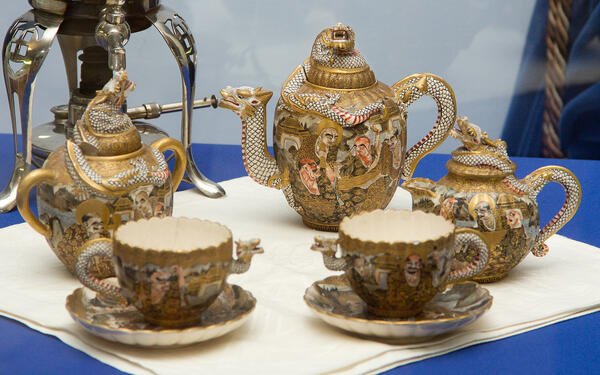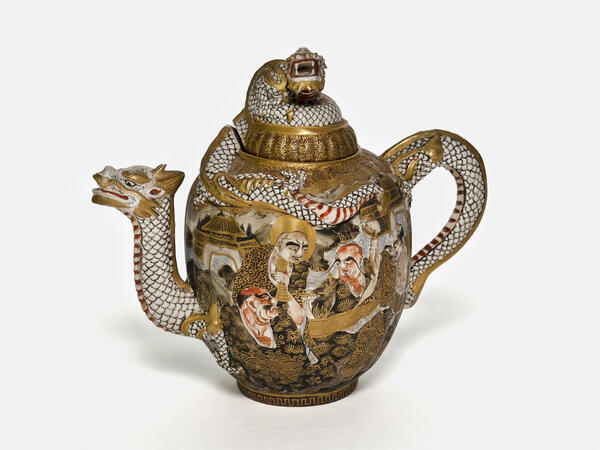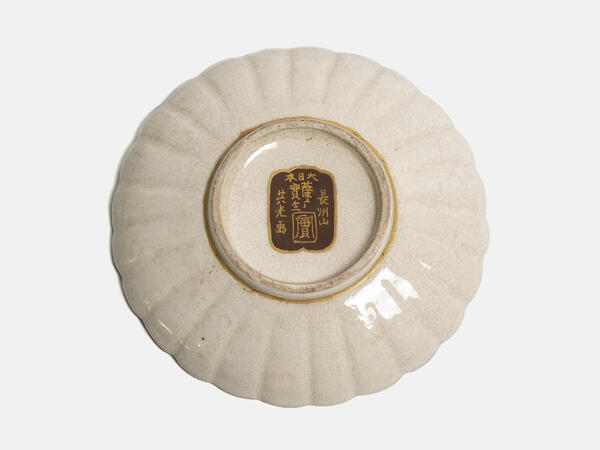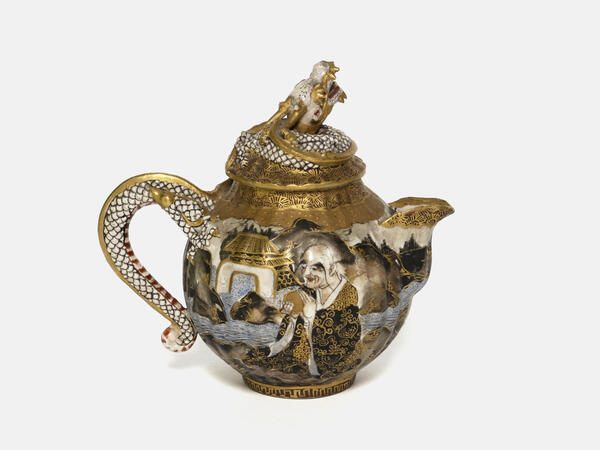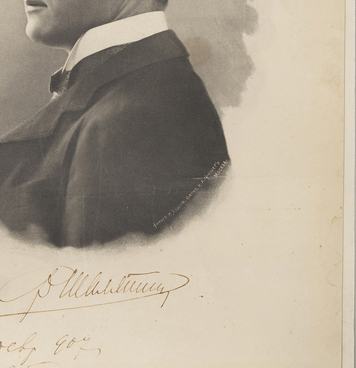The name of Feodor Chaliapin — an international celebrity and People’s Artist of the Russian SFSR — was banned in the USSR for decades. The Soviet government did not like his open-mindedness and the fact that he went on European tours and provided financial aid to the children of emigrants, which was seen as support for the White Guard movement. Only 30 years after his death, in the late 1960s, the Khrushchev Thaw led to the opening of the first Soviet exhibition dedicated to Feodor Chaliapin in Kazan.
Many exhibits from Chaliapin’s apartment were not only of historical but also of artistic value. They include a Japanese coffee service “The Dragon and the Monks”, placed on the singer’s monogrammed napkin. The singer’s family used the set in his last Russian apartment, the one on Graftio Street in Saint Petersburg — from there, he went abroad forever.
The European service consists of two cups with saucers, a sugar bowl, a creamer and a coffee pot. The faience service is painted with gold and colored enamels in the overglaze technique.
The coffee service is performed in the style of Satsuma pottery known since the 16th century. Satsuma was a northern Japanese province with large clay deposits, where one of the main ceramics industries in the country was located. The craftsmen worked near the shore, so the subjects for the paintings were often inspired by the sea. The displayed service features shells and sea waves.
The main subject of Japanese ceramics painting revolves around Buddhist mythology. The focal point of each item of the service is the image of a god in the form of a large wriggling snake. The dragon is drawn in the Japanese style, with three fingers — this image made with small river shells was first used 7000 years ago. The dragon represented the divine power of the emperor and was the national symbol of Japan.
All pieces of the service are complemented with images of Buddhist monks who were hermits. They went through self-disciplining practices far away from human settlements, mortifying the flesh and developing spirituality. The abundance of gold is characteristic of Satsuma ceramics — this emphasized the splendor of services, which were very popular throughout Europe in the 19th century.
